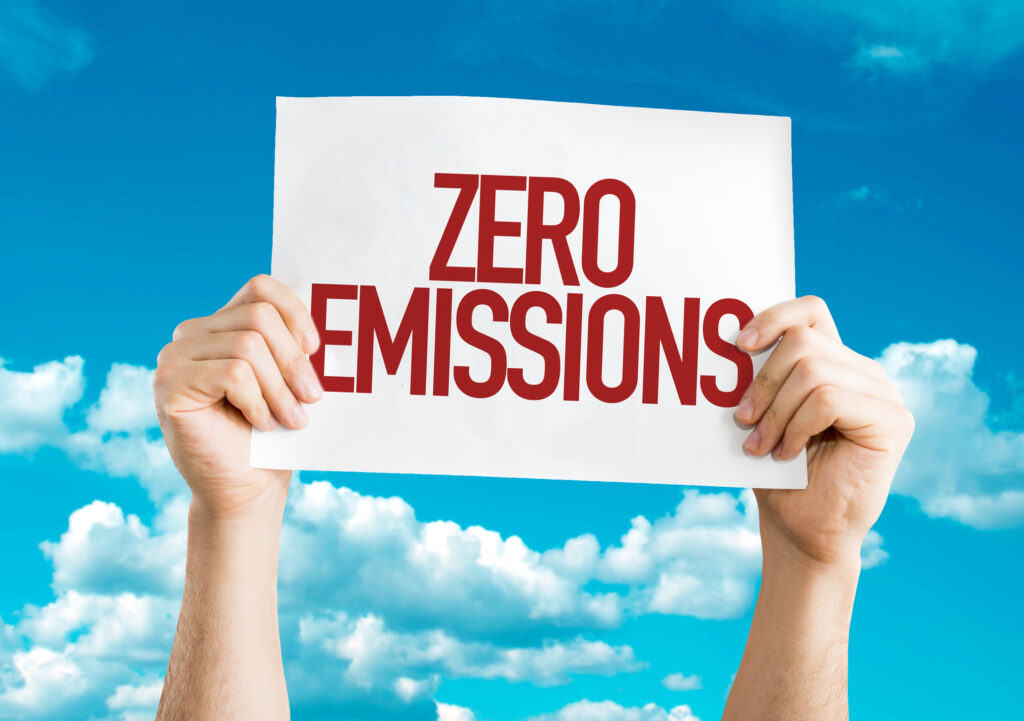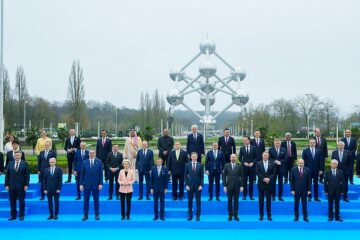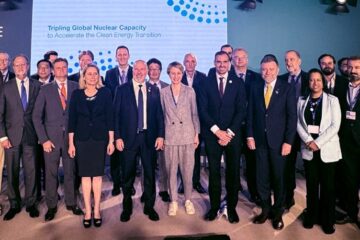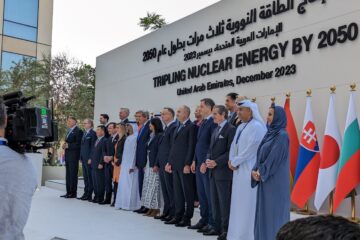Net Zero needs more nuclear – it’s time to get on with it
Adopted in 2015, 196 countries signed the Paris Climate Agreement (to date 188 of them have ratified it) accepting global ambition to limit global warming to “well below” 2C and adding an aspirational goal of limiting warming to 1.5C. The Paris deal also commits signatories to balance greenhouse gas emissions and sinks in the second half of this century. This has become understood to mean “Net Zero” emissions.
By the end of August 2020, over 125 countries (including the European Union) had set or were actively considering long-term net-zero emissions targets by about 2050. As opposed to strategies to simply reduce emissions by 20 or 30%, a net zero target requires finding ways to totally eliminate fossil emissions and meet all of our energy needs with very low carbon options.

The magnitude of the challenge is enormous, and more and more governments are realizing this means there is no single technology that can provide the complete solution. Rather, the time has come to stop thinking about competition between different energy sources and instead look at how they can best work together if there is to be a realistic chance of success.
In its current World Energy Outlook (WEO 2020), the International Energy Agency (IEA) recognized this push to net zero. In addition to its traditional Stated Policies Scenario (STEPS), based on today’s policy settings and Sustainable Development Scenario (SDS) which examines what actions would be necessary to achieve 2030 climate goals; it created a new scenario, the Net Zero by 2050 (NZE2050) scenario to show a possible path for the world to reach net zero by 2050.
The NZE2050 scenario assumes large reductions in energy demand and massive increases in renewable generation, with a modest increase in nuclear power, all to replace fossil fuels which show dramatic decline. This is a useful exercise. However, rather than provide a clear path to net zero, this scenario succeeds in demonstrating the sheer magnitude of the challenge ahead if we are to meet this ambitious goal.
For example, in this NZE2050 scenario primary energy demand falls by 17% between 2019 and 2030, to a level like 2006, even though the global economy is twice as large. This would be achieved through electrification, efficiency gains and behaviour changes. To put this in context, this same report estimates that energy demand will fall by about 5% in 2020 because of the global covid pandemic and the associated reduction in economic activity. It also points out there will be around 660 million people who will not have access to electricity and 2.4 billion who will not have access to clean cooking by 2030 globally if we stay on the stated policy scenario path. This makes it very hard to imagine achieving a demand reduction of 17% by 2030 with a fully recovered healthy global economy while trying to bring energy to those that are currently under served.
And yes, we certainly do agree that solar development has been nothing short of astounding and fully support continuing with this rapid growth. At the same time, it is hard to imagine the optimum solution to massive energy transformation requiring the large-scale replacement of much our energy infrastructure could be led by the electricity source (solar) that has the lowest energy density (requiring huge amounts of land) and that produces electricity only between about 13 and 23% of the time (when the sun shines). The WEO recognizes this large growth in variable renewables leads to issues related to system flexibility and creates further challenges requiring large investments in infrastructure including new sources of energy storage.
On the positive side, the IEA, as do many others, now clearly acknowledge that nuclear power is an important low carbon source of energy and that it must play a role. In its analysis, nuclear and renewables grow while fossil use drops. The problem is that in this scenario, nuclear power only grows by about 36% to 2050. The result is the global share of nuclear hardly moves from today with renewables left to do the heavy lifting.
A larger nuclear share would provide energy security, reliability and be cost effective, mostly by reducing the large system (flexibility) costs required to implement such a large share of variable renewables all while reducing the pressure to reduce overall energy use. The IEA itself acknowledges that nuclear power plays a much larger role in many Intergovernmental Panel on Climate Change (IPCC) 1.5 °C scenarios, than in its NZE2050. (Half of IPCC 1.5 °C scenarios imply an increase in nuclear generation of 60% between 2019-30 compared with a 36% increase in the NZE2050).
The nuclear industry through the World Nuclear Association (WNA) has proposed its Harmony goal of 25% electricity generated from nuclear by 2050. This means about 1,000 GW (1000 large reactors) of new nuclear by then, which would be equivalent on an energy delivered basis to the growth assumed for solar adding a large amount of always on, 24/7 energy to the system. Achieving this goal requires strong commitments from governments and industry. This would complement the growth in renewables nicely and result in less pressure on demand reduction, less issues with flexibility requiring less infrastructure development and an overall lower cost energy system.
We are seeing exceptional innovation as vaccines for covid are being made available in time frames never before seen to address this pandemic. This shows what we can do as a society when we all work together to a common goal. As stated by Associate Deputy Minister of Natural Resources Canada Shawn Tupper in a web chat with OECD Nuclear Energy Agency Director-General William Magwood, “We’ve got to stop talking about Utopia; we’ve got to stop just talking about what our targets are and actually articulate our plan starting tomorrow … what are the building blocks to getting there.”
So, the time has come to talk less and do more to make sure nuclear can reach its full potential and set the world on a real path to net zero.





5 Comments
Valerie Gardner · December 10, 2020 at 12:52 am
Thanks for a well-articulated argument to get moving! It appears that a whole new academic discipline is arising to look at our grids and the challenges facing them which is called “macro energy systems.” Starting to think about the totality of our energy needs, the changing flows and growth variables, including what appears to be the need for massive amounts of power for carbon capture, utilization and storage, will definitely help us harmonize and optimize all of the critical pieces, of which nuclear is definitely one. I appreciate that you come out in support of both nuclear and renewables and recognize that we need big increases in both and that, when done right, they will complement each other and enable us to achieve decarbonization faster.
Gordon Dolan · December 11, 2020 at 9:10 pm
Conventional nuclear (PWR/Uranium) won’t do it. Massive reactor plants are dead in the economic water and must be replaced by many Gen 4 MSR/LFTR units with microgrids, solving both distribution issues, providing inherent safety and minimising waste products.
Liz Penfold · December 13, 2020 at 10:37 pm
Small modular thorium molten salt burners/reactors safe clean reliable and transportable and able to burn nuclear waste as fuel has all the advantages and none of the disadvantages of other green energy solutions.
Matt Robinson · December 13, 2020 at 8:24 pm
If we’re going to ‘get moving’ on net zero, conventional LWR/Uranium reactors available now are CRUCIAL. Relying on Gen IV tech which *might* be available commercially in 10-15 years is NOT an adequate strategy.
There’s nothing wrong with current modern nuclear plant designs, and our current grids are designed for large-scale generators. We should be building plants now, with a view to replace current plants with Gen IV when they reach EOL and Gen IV is truly available.
Remember commercial licenses are just an early step in a long journey. Gen IV represents a large departure from current designs, and so will likely need several iterations of failure/response events to reach the same level of maturity our current designs now have. Global rollout of Gen IV is decades away, even if it has no failures. And where designs may shine, politics will cloud every step.
We need to ramp up the deployment of current Gen III+ designs NOW. Otherwise all we’re doing is pissing in the wind.
The energy transition must make society better and not leave people behind – mzconsultinginc.com · March 5, 2021 at 6:40 pm
[…] December we wrote about the world’s drive to achieve net zero carbon emissions by 2050. A laudable goal, the World Energy Outlook (WEO) 2020 illustrates a possible path to […]
Comments are closed.